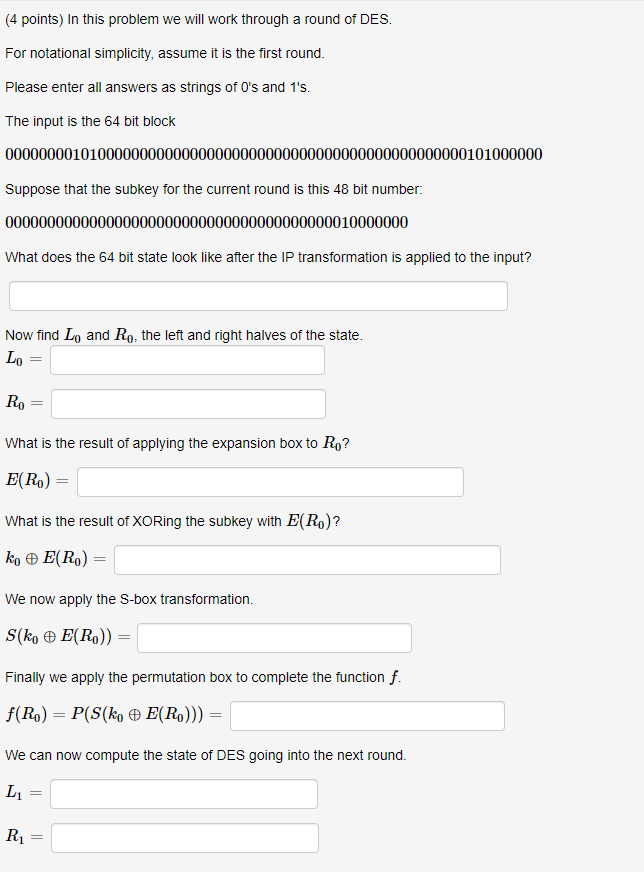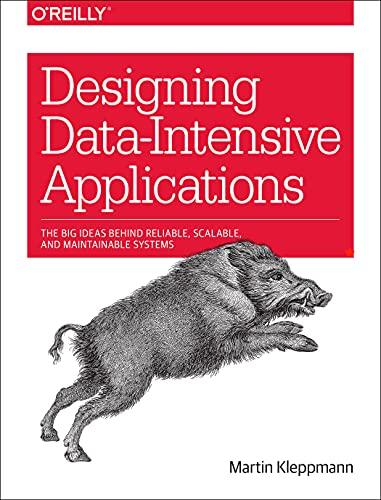Question
(4 points) In this problem we will work through a round of DES. For notational simplicity, assume it is the first round. Please enter all

(4 points) In this problem we will work through a round of DES.
For notational simplicity, assume it is the first round.
Please enter all answers as strings of 0's and 1's.
The input is the 64 bit block
00000000101000000000000000000000000000000000000000000001010000000000000010100000000000000000000000000000000000000000000101000000
Suppose that the subkey for the current round is this 48 bit number:
000000000000000000000000000000000000000010000000000000000000000000000000000000000000000010000000
What does the 64 bit state look like after the IP transformation is applied to the input?
Now find L0L0 and R0R0, the left and right halves of the state. L0=L0=
R0=R0=
What is the result of applying the expansion box to R0R0?
E(R0)=E(R0)=
What is the result of XORing the subkey with E(R0)E(R0)?
k0E(R0)=k0E(R0)=
We now apply the S-box transformation.
S(k0E(R0))=S(k0E(R0))=
Finally we apply the permutation box to complete the function ff.
f(R0)=P(S(k0E(R0)))=f(R0)=P(S(k0E(R0)))=
We can now compute the state of DES going into the next round.
L1=L1=
R1=R1=
(4 points) In this problem we will work through a round of DES. For notational simplicity, assume it is the first round. Please enter all answers as strings of O's and 1's. The input is the 64 bit block 0000000010100000000000000000000000000000000000000000000101000000 Suppose that the subkey for the current round is this 48 bit number: 000000000000000000000000000000000000000010000000 What does the 64 bit state look like after the IP transformation is applied to the input? Now find Lo and Ro the left and right halves of the state. LO RO What is the result of applying the expansion box to Ro? E(R) What is the result of XORing the subkey with E(Ro)? ko e E(R) = We now apply the S-box transformation. S(ko e E(RO)) = Finally we apply the permutation box to complete the function f. f(Ro) = P(S(ko e E(R))) = We can now compute the state of DES going into the next round. 5 L1 = R1Step by Step Solution
There are 3 Steps involved in it
Step: 1

Get Instant Access to Expert-Tailored Solutions
See step-by-step solutions with expert insights and AI powered tools for academic success
Step: 2

Step: 3

Ace Your Homework with AI
Get the answers you need in no time with our AI-driven, step-by-step assistance
Get Started


